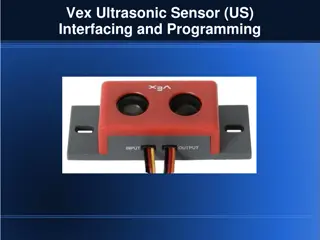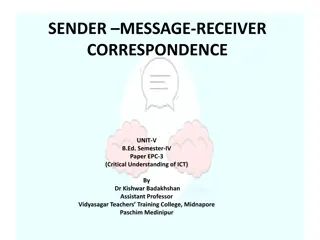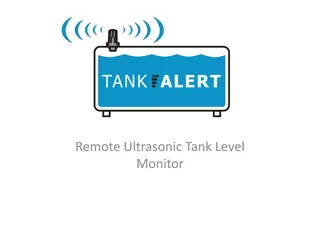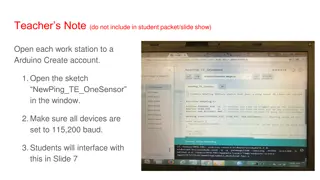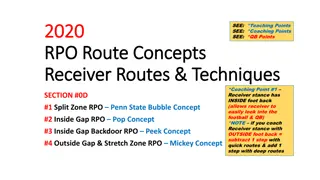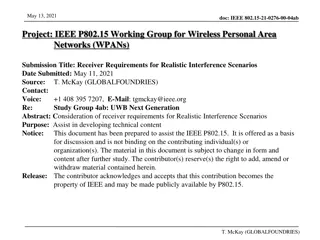Four Channel Ultrasonic Receiver Project Overview
Design and create a Four Channel Ultrasonic Receiver capable of receiving signals between 30 kHz and 50 kHz, including chirp and constant frequency signals. The project involves detailed system design, testing, circuit design, PCB layout, and various project milestones. High risks such as component volumes, voltage ratings, micro-soldering, and team collaboration need to be mitigated.
Download Presentation

Please find below an Image/Link to download the presentation.
The content on the website is provided AS IS for your information and personal use only. It may not be sold, licensed, or shared on other websites without obtaining consent from the author.If you encounter any issues during the download, it is possible that the publisher has removed the file from their server.
You are allowed to download the files provided on this website for personal or commercial use, subject to the condition that they are used lawfully. All files are the property of their respective owners.
The content on the website is provided AS IS for your information and personal use only. It may not be sold, licensed, or shared on other websites without obtaining consent from the author.
E N D
Presentation Transcript
FOUR CHANNEL ULTRASONIC RECEIVER TEAM C BRIAN MARKUS (TEAM LEAD) DANNY VISELMAN CHEN JIA
OVERVIEW Design and create a Four Channel Ultrasonic Receiver, capable of receiving signals between 30 kHz and 50 kHz. Capable of receiving a chirp signal as well as a constant frequency signal (Beacon). Will work with Team B s Ultrasonic Transmitter.
SYSTEM DESIGN Level 0 Level 1
SYSTEM DESIGN (CONT.) Level 2
TESTING/EVALUATION Will design the system one component at a time, simulating each environment. Function generators will be used to simulate incoming signals and oscillators. We will slowly integrate each component to another, making sure each stage is designed properly. An important aspect of our testing is to verify that the synchronization circuit between Team B s transmitter is working properly, since that is primary use for our receiver. Once everything is verified we will get with Team B and test the chirp and beacon signals.
CIRCUIT DESIGN High Level Circuit Design of a Single Receiver Channel
PCB LAYOUT Last years 2 Channel Ultrasonic Receiver PCB
PROJECT MILESTONES Signal acquisition Mixer/LO/Filter/Amplifier Hardware design Embedded system design (software) Over-voltage protection PCB layout design Assembly Testing and evaluation
RISK MITIGATION High risks: 1. High volume of components 2. Maximum Voltage/Current ratings of components 3. Micro-solder required (most components will be surface mount) 4. Maximum ratings of the Arduino Due 5. Avoid component interference 6. Collaboration amongst team members and with the transmitter team is crucial.





